
ClientConnect 2023: Health Roads and Medicaid 1115 Waiver Programs
ClientConnect 2023, our inaugural peer-to-peer conference for human services organizations, was a resounding success! But if you missed out, don’t

ClientConnect 2023, our inaugural peer-to-peer conference for human services organizations, was a resounding success! But if you missed out, don’t

ClientConnect 2023, our inaugural peer-to-peer conference for human services organizations, was a resounding success! But if you missed out, don’t

Victim service providers help individuals and families fleeing domestic violence. However, providers face additional complexity when it comes to protecting
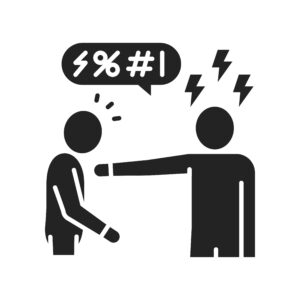
Many caseworkers endure verbal abuse from clients. There are many de-escalation techniques, some more effective than others. How should you
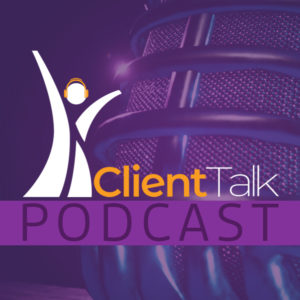
ClientTalk is where our industry experts give you their best insights and best practices across the spectrum of social services.

New NOFOs, new resources, and new studies: There’s been a lot of new developments for continuums of care (CoC) over
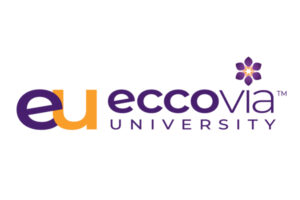
Health and human service organizations often get behind with learning and development. What if there were a solution specifically for

Eccovia is proud to sponsor Pivot Adventure, a nonprofit organization that provides outdoor recreational therapy to teens experiencing mental health

Why do data standards change? How much data collection is enough, and what are the current HUD data standards? In

What’s the difference between sheltered and unsheltered homelessness? What is the most common form of homelessness? Is couch surfing considered homelessness? Each of these questions and more are critical in understanding what we mean when we say a person is “experiencing homelessness”.

ClientTalk is where our industry experts give you their best insights and best practices across the spectrum of social services. With storied careers and thoughtful points of view, the leaders here at Eccovia know about a lot more than compliance—because they’ve been where you are.

Victim service providers (VSPs) offer support and advocacy to individuals and families who have suffered domestic violence. Although similar, support and advocacy have distinctly different roles to play to ensure long-term success for victims.

Can homeless services utilize health data? The answer is yes—but only if they follow strict rules put forth by HUD and HIPAA for HMIS. Check out what these rules entail and what benefits come from following them.

When summer comes, so do rising temperatures and blistering heat. For people experiencing homelessness, this change can be dangerous—even deadly. How can homeless services best prepare for the coming summer?

Being a child isn’t always easy; neither is being a refugee. What about when you’re both? Consider these unique obstacles refugee children face, as well as how we can better support them as they resettle.

Since 2009, March 31st marks Transgender Day of Visibility. Celebrated by LGBTQ+ communities across the globe, this day serves as a chance to honor progress that transgender individuals and groups have made. It also offers a chance to improve the ways social services address transgender and gender non-conforming communities.

Did you know that over 60% of mental health professionals are social workers? The unique challenges that social workers face mean that they are also at higher risk of developing adverse mental health. Check out the state of mental health among social workers–and how to help.
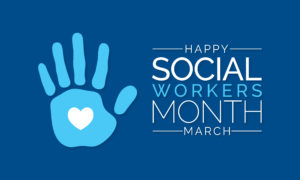
What is National Social Work Month? Check out more on the history–and importance–of social work, as well as five ways you can get involved today.

HIV/AIDS impacts more than men who have sex with men. In fact, 23% of cases in the US occur in women. How can health and human service organizations better support these vulnerable populations? It starts with understanding the unique needs of women and HIV/AIDS care.

How can VSPs best set survivors up for success? The path to healing from domestic violence may be difficult, but it doesn’t have to be lonely. Consider how and why VSPs are an integral part of this very healing.
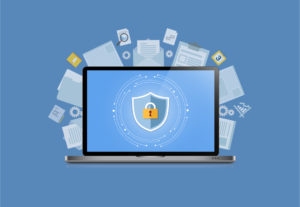
For any VSP (Victim Service Provider), the top concern should always come down to security. This is for more than ensuring funding–it comes down to protecting the people in their care from those that would do them harm. But how secure is your comparable database?

Are you a Victim Service Provider? Then you should be aware of the signs of a successful comparable database for case management. It comes down to much more than simply following compliance for HUD–you need to make sure it has powerful management tools, a robust security model, and standards for accessibility.

As a victim service provider, you work with vulnerable populations and must ensure that their data is safe and secure. One way to make sure this happens? Integrating a comparable database into your organization.
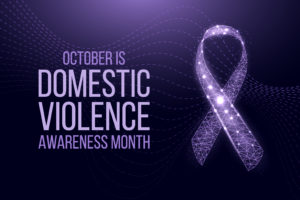
Did you know that on average, nearly 20 people per minute experience physical abuse by an intimate partner in the United States? In the span of a year, this equates to over 10 million men and women. For Domestic Violence Awareness Month, consider these reasons as to why awareness matters.

Knowing the state of mental health among unhoused individuals is the first step in better advocating for change. Consider how mental health plays a role in issues surrounding homelessness, and how your organization can begin to work towards eradicating adverse mental health in your communities.

Care coordination plans are the future of healthcare. By utilizing strategies that bring community resources together, health and human service providers can offer better, more comprehensive services that save costs while improving patient outcomes.

Health and human service organizations are beginning to understand why working together is so important. By bridging the gaps of siloed care through whole person care, these organizations can successfully accomplish the “triple aim”: improving the patient experience, improving health outcomes, and reducing the cost of healthcare.

Health and human services are complex. They require case management systems that not only do the job but do it well. How can you be sure that your case management is at the standard you need? Consider these four elements: client intake and assessment, design tools, referral management, and reporting.

For over 30 years, Ryan White programs have led the nation in HIV care. Today, nearly half of all HIV-positive individuals in the US rely on Ryan White for their health needs. Organizations providing this care are comprehensive in their approach and focus on helping low-income communities.

July is Social Wellness Month, and central to health and wellness is a sense of community. How can health and human service organizations better foster this belongingness? It starts with care coordination that is focused on bringing services together.

As the summer months continue, experts warn of an uptick in domestic violence cases. Why does such violence increase during this warmer season? More importantly, what can your social service organization do to help?
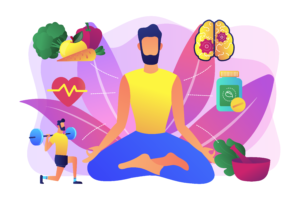
Whole person care is gradually becoming more prevalent in the realm of health and human service organizations. But what exactly does it mean? Check out the definition and importance of whole person care, as well as how your organization can begin implementing it today.

HMIS is a buzzword in the realm of homelessness agencies. But what does it exactly mean? And why is it important? In this blog post, we explore the specifics of HMIS and how a powerful case management solution can improve data, analysis, and services provided.

With summer just around the corner, millions of children are about to lose their sole source of consistent nutrition: school lunch. What can your health and human service organization do to help push back against this hunger? We suggest three simple steps: inform, coordinate, and advocate.

Did you know May is both Mental Health Awareness AND Teen Self-Esteem Month? Pivot Adventure, a non-profit in Utah, utilizes recreational therapy to provide affordable mental health courses for teenagers. Their unique approach is critical to the effectiveness of these social services.

Earlier this year, we discussed what refugee resettlement programs can expect in 2021. Many of these expectations have changed—despite big promises from the current administration, only 2,050 refugees have been admitted to the US during the 2020-21 fiscal year (Sep—Aug). What are the problems facing refugees amidst these changes?

Americans experience some of the highest rates of stress in the world. Those in lower socio-economic brackets report even higher levels, and this can negatively impact their overall health. A whole person care approach can help health and human service organizations better address stress.

This year’s theme for World Health Day is “Building a Fairer, Healthier World”. Key to accomplishing this goal is understanding—and addressing—social determinants of health. As more healthcare providers take a holistic approach to health, more individuals and communities will receive the care they need.

Running a health and human services organization can be as challenging as it is rewarding. Often, case management processes—like entering data into spreadsheets, creating reports, and handling clientele growth—can slow down organization effectiveness. Be aware of the signs that show it may be time to upgrade to a more functional case management system.

How can food and nutrition programs best combat child hunger? The COVID-19 pandemic has opened the path for one possible solution: universal school lunch. Advocates pushing for a long-term implementation cite the academic and health benefits of such programs.

In an earlier blog from 2019, we outlined HMIS Data Standards and how they were changing. Now the changes have been made and it is time to reflect.

Hunger in the United States is rising, and food and nutrition services are looking to the Supplemental Nutrition Assistance Program (SNAP) for help. As the new administration is challenging lawmakers to increase the financial support for SNAP, food programs are hoping to see an increase in both benefits and eligibility.

What is the best treatment for cancer? While there may not be one simple answer, experts agree on the importance of a whole person care approach. Through social determinants of health, programs and organizations can better help cancer patients by providing the care that they need.
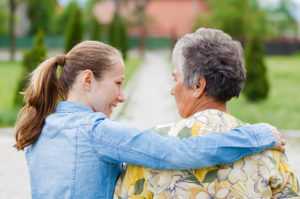
The challenges for aging services have become more apparent in the wake of COVID-19. Not only are older adults more at risk from coronavirus complications but they are also prone to compounding issues regarding food security, mental health, and isolation.

As the Biden Administration implements a historic limit of 125,000 refugees into the US, resettlement programs can expect new changes with their budget but should prepare for a more gradual shift in execution.

International Women’s Day is an opportunity to reflect on and celebrate the contributions of women in every field and walk

February is Teen Dating Violence Awareness Month. Learn how to get involved and promote healthy, respectful relationships for teenagers, and

ClientConnect 2023, our inaugural peer-to-peer conference for human services organizations, was a resounding success! But if you missed out, don’t

Veteran’s Day is a time to honor all those who have served our country in any of the armed forces.

Why Data Mining Is a Double-Edge Sword for Social Services Drawing the right conclusions from client data in social services

Climate change is affecting human life economically and sociopolitically, and vulnerable populations often have little recourse to protect themselves from

Protecting vulnerable clients’ data has never been more important, as cybersecurity attacks have proliferated and become increasingly easy to perform.

We’ve heard a lot about congressional in-fighting over the US government’s debt ceiling, and social service providers are bracing themselves

Case managers are what keeps social services running, and continuing education is essential to keep them up to date with

ClientTalk is where our industry experts give you their best insights and best practices across the spectrum of social services.